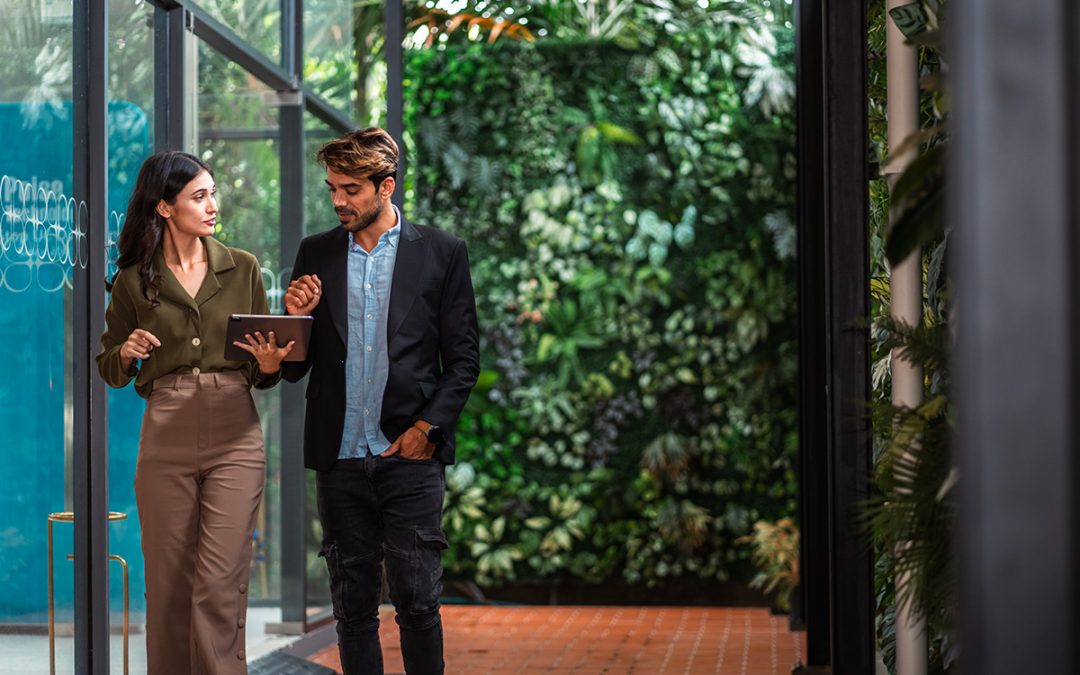Biophilic design is an innovative approach to creating spaces that integrate natural elements, promoting well-being, sustainability, and functionality. Whether you’re designing a home, office, retail space, or public area, hiring the right professional is critical to achieving your vision. The success of your biophilic design project depends on working with experts who understand the principles of biophilia, have experience in sustainable design, and can tailor solutions to your unique needs.
This article explores who you should hire for a biophilic design project, the core competencies to look for, essential interview questions to ask, and common pitfalls to avoid.
Who to Hire for a Biophilic Design Project
Depending on the scope and complexity of your project, you may need one or more of the following professionals:
1. Architects
Architects play a pivotal role in designing buildings that seamlessly integrate natural elements. They can incorporate features such as natural light optimization, green roofs, and open layouts into the structure of a space.
- Best For: Large-scale projects, such as office buildings, schools, or residential developments.
- Core Skills: Sustainable architecture, passive design principles, energy efficiency, and knowledge of building codes.
2. Interior Designers
Interior designers specializing in biophilic design focus on creating indoor environments that foster a connection with nature. They excel at incorporating plants, natural materials, and nature-inspired patterns into interiors.
- Best For: Smaller projects, such as homes, retail spaces, or hospitality interiors.
- Core Skills: Space planning, material selection, and integration of biophilic elements like living walls and water features.
3. Landscape Architects
Landscape architects are essential for outdoor components of biophilic design, such as gardens, courtyards, and green roofs. They design sustainable and aesthetically pleasing outdoor spaces that align with the overall vision.
- Best For: Projects requiring outdoor spaces or seamless indoor-outdoor integration.
- Core Skills: Horticulture knowledge, water management, and native plant design.
4. Biophilic Design Consultants
Specialized biophilic design consultants can provide expertise on integrating natural elements into the built environment. They work alongside architects and designers to ensure biophilic principles are effectively applied.
- Best For: Projects where biophilic design is the primary focus or requires expert guidance.
- Core Skills: Deep understanding of biophilic design theory, project-specific customization, and sustainability strategies.
5. Horticulturists or Green Wall Specialists
If your project involves significant greenery, such as living walls or indoor gardens, hiring a horticulturist or a green wall specialist is essential for plant selection, installation, and maintenance planning.
- Best For: Projects with extensive plant integration.
- Core Skills: Plant care, environmental adaptation, and long-term maintenance solutions.
Core Competencies to Look For
When hiring for a biophilic design project, ensure candidates demonstrate the following competencies:
- Knowledge of Biophilic Design Principles
- Familiarity with integrating natural light, greenery, water features, and nature-inspired patterns.
- Understanding of biophilia’s psychological and physiological benefits.
- Sustainability Expertise
- Experience in energy-efficient and eco-friendly design practices.
- Use of sustainable materials and practices that reduce environmental impact.
- Creativity and Flexibility
- Ability to tailor solutions to unique spaces, client needs, and budgets.
- Creativity in using natural elements in both traditional and unconventional ways.
- Technical Proficiency
- Understanding of structural requirements for features like green walls or rooftop gardens.
- Ability to work with advanced tools for modeling and rendering biophilic elements.
- Communication and Collaboration
- Strong interpersonal skills for working with clients, contractors, and multidisciplinary teams.
- Ability to translate biophilic concepts into actionable design plans.
Interview Questions to Ask
When interviewing candidates, ask questions to gauge their expertise, creativity, and alignment with your vision:
General Questions
- What is your experience with biophilic design projects?
- Can you share examples of past projects that incorporate biophilic principles?
- How do you stay updated on trends and innovations in biophilic and sustainable design?
Project-Specific Questions
- How would you approach integrating natural elements into my space?
- What challenges do you foresee with this project, and how would you address them?
- How do you balance aesthetics, functionality, and sustainability in your designs?
Collaboration and Maintenance
- How do you work with other professionals, such as architects or landscape designers, on biophilic projects?
- What maintenance considerations should I plan for after the project is completed?
Budget and Timeline
- How do you ensure projects stay within budget and meet deadlines?
- What cost-effective solutions can you recommend for incorporating biophilic elements?
Pitfalls to Avoid
To ensure the success of your biophilic design project, steer clear of these common mistakes:
1. Underestimating Maintenance Requirements
Living components, like plants and water features, require ongoing care. Neglecting maintenance planning can lead to deteriorating aesthetics and functionality.
Solution: Hire professionals who provide maintenance guidance or offer long-term care plans.
2. Ignoring Climate and Environmental Factors
Using plants or materials unsuitable for the local climate can result in high costs and poor outcomes.
Solution: Work with experts knowledgeable about native plants and climate-specific solutions.
3. Overcomplicating the Design
Overloading a space with biophilic elements can make it feel cluttered or unbalanced.
Solution: Focus on quality over quantity, integrating elements that align with the space’s purpose and aesthetic.
4. Failing to Collaborate
Poor communication between the client and design team can lead to misaligned expectations and delays.
Solution: Establish clear goals and maintain open communication throughout the project.
5. Overlooking Budget Constraints
Biophilic design can be expensive if not planned carefully, leading to overspending or incomplete projects.
Solution: Set a realistic budget and work with professionals who can suggest cost-effective options.
Conclusion
Hiring the right professionals for your biophilic design project is critical to creating a space that harmonizes with nature and meets your goals. Whether you’re working with architects, interior designers, or landscape specialists, prioritize candidates with expertise in biophilic principles, sustainability, and collaborative communication.
By asking the right questions and avoiding common pitfalls, you can build a team that brings your vision to life—creating an environment that enhances well-being, fosters connection with nature, and adds lasting value to your space.

